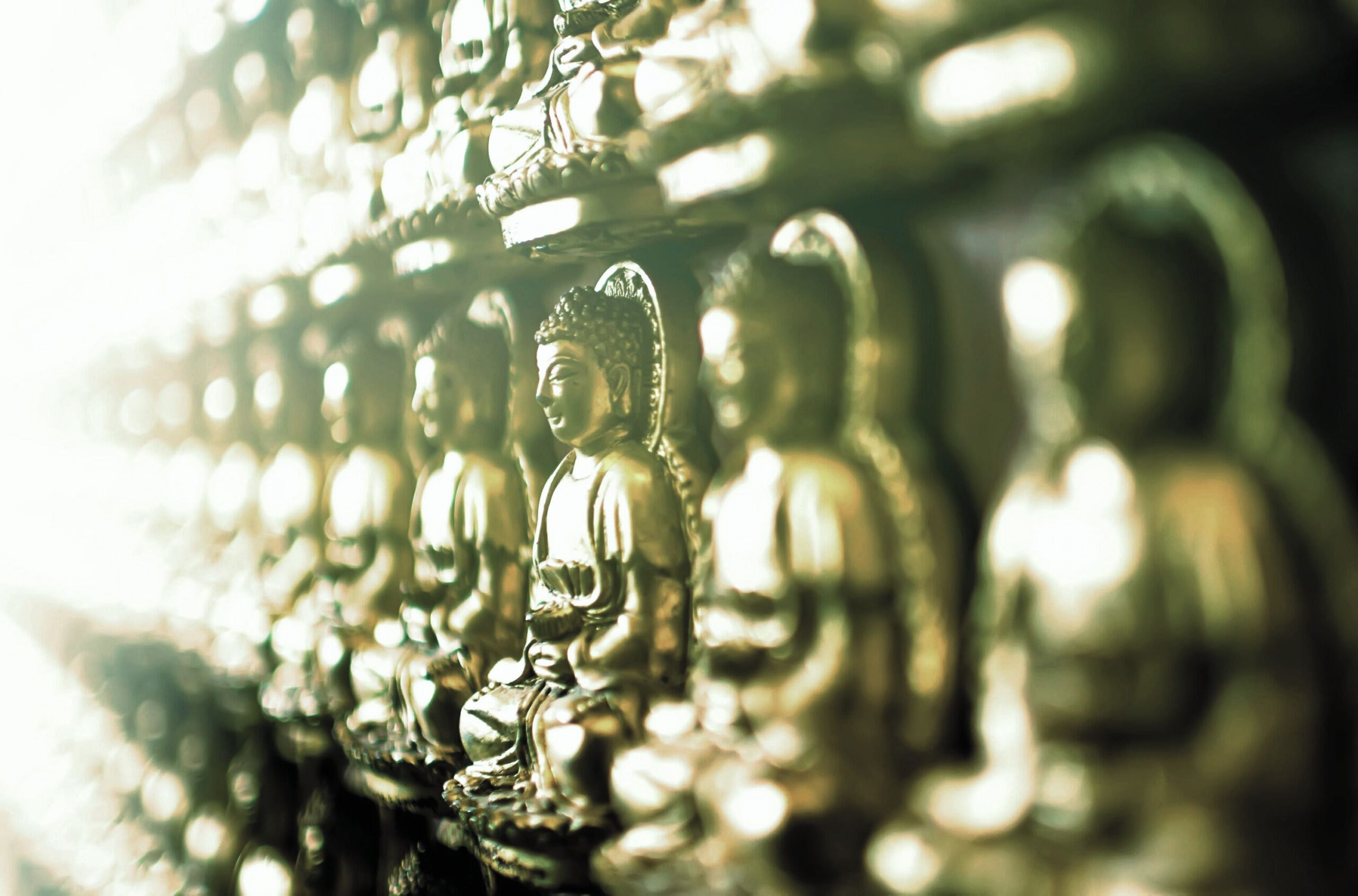Many Buddhas
There have been thousands of Buddhas on this planet, before and even after Gautama the Buddha. This means that “Buddha” is not a name but rather a quality representing one who has gone beyond the intellect or is enlightened. “Bu” means Buddhi or the intellect, and one who is above the intellect and no longer part of the mind is called a Buddha.
Gautama Buddha was not the only Buddha, but rather one of many enlightened beings throughout history, and the Buddha refers to anyone who has transcended the mind and realized their true nature. In the Indian subcontinent, many Buddhas have existed throughout history, some documented, many not so well documented.
Goal of Spirituality
The goal of the spiritual path is to transcend the mind and intellect and experience life directly without the filters of thoughts, emotions, and prejudices. This is what it means to become a Buddha.
Spirituality is not about specific practices or beliefs but a way of being. It involves nurturing one’s body, mind, emotions, and energies to a level where something deeper blossoms within. It transcends beliefs in God, as both theists and atheists are focused on beliefs rather than direct experience. Genuine spiritual seekers realize their ignorance and seek to experience the nature of existence directly. Spirituality entails being equally engaged and attentive to all aspects of life without favoritism or discrimination.
In yoga, the three terms – Buddhi, Chitta, and Manas – represent distinct facets of the human mind and consciousness. Buddhi is often understood as the intellectual or logical dimension of thought, responsible for processing information and making decisions. Chitta is the repository of impressions, memories, and subconscious tendencies that influence an individual’s personality and life experiences. It is believed to store accumulated memories of life. Manas is the active, thinking aspect of the mind, responsible for generating thoughts, emotions, and mental activity. It is seen as the interface between the physical body and deeper consciousness.
In this yogic view, these three elements—Buddhi, Chitta, and Manas—collectively form the human psyche, each playing a role in perception and interaction with the world. Sanatana’s spiritual perspectives propose that transcending the limitations of the intellect (Buddhi) is essential for experiencing enlightenment or a direct realization of reality, often referred to as “Buddha-hood.”
In essence, this yogic spirituality framework distinguishes between the rational intellect (Buddhi), subconscious impressions (Chitta), and the active thinking mind (Manas), all of which shape human consciousness and the spiritual journey toward liberation.
Gautama the Buddha
Gautama Siddhartha, commonly known as Gautama Buddha, a Hindu prince from Lumbini, Nepal, was one of history’s most well-known spiritual teachers. In his lifetime, about 40,000 monks went out to spread his teachings.
Siddhartha was initially sheltered from worldly suffering by his father, a king. At twenty-nine, witnessing old age, sickness, death, and asceticism, he renounced his royal life. After years of spiritual seeking, Siddhartha attained enlightenment under a bodhi tree, becoming the Buddha. He spent his life teaching the Dharma and established a community of followers. He passed away at eighty, leaving behind a yogic legacy that profoundly influenced the world, birthing Buddhism.
The Buddhist tradition encompasses several distinct branches, each with its own beliefs and practices. Theravada Buddhism, rooted in the earliest teachings, focuses on individual enlightenment and meditation. Predominant in Southeast Asia, it emphasizes the path to nirvana. Mahayana Buddhism, originating in India around the 1st century BCE, offers universal salvation through bodhisattvas’ compassion. It expanded the canon and spread widely across East Asia. Vajrayana Buddhism, an esoteric offshoot of Mahayana, developed in India around the 5th-6th centuries CE. Utilizing tantric rituals, it aims for an accelerated path to enlightenment, closely associated with Tibetan Buddhism. These branches – Theravada, Mahayana, and Vajrayana – offer overlapping yet diverse paths to nirvana.
Adi Yogi (the first Guru) or Shiva elucidated 112 distinct methods for individuals to reach their pinnacle of consciousness, with Buddha’s teachings embodying one of those avenues—the path of awareness. Shiva predates Gautama by centuries, and Buddha’s teachings are not separate from or contradictory to Shiva’s broader spiritual vision. Instead, they represent one particular expression or exploration of Shiva’s expansive spiritual framework and teachings.
The Buddhist concept of the Trikaya or “three bodies” of a Buddha bears some resemblance to the Hindu Trimurti of Brahma, Vishnu, and Shiva. The Dharmakaya, representing the ultimate, transcendent essence and reality of a Buddha’s enlightenment, can be likened to Brahma as the creative, generative aspect in Hinduism – both pointing to the fundamental, unmanifested source from which all emanates. The Sambhogakaya, the sublime, celestial form a Buddha takes to reign over pure realms, is akin to Vishnu’s role as the preserver and sustainer that pervades the cosmos. Both represent the active, manifested aspect that nurtures the created realms and beings. Meanwhile, the Nirmanakaya, referring to the physical, earthly manifestations of a Buddha born to guide beings, parallels Shiva’s function as the transformer and recycler of creation. Both embody the phenomenal world’s periodic renewal, destruction, and rebirth principle.
In essence, “Buddha” signifies a state of enlightenment reachable by many. The spiritual path aims to transcend the mind’s limitations through the yogic lens of Buddhi, Chitta, and Manas, echoing Shiva’s broader spiritual vision, which the most famous Buddha is known to carry out.
Source: Sadhghuru discourses.
Image: Pexels, modified
